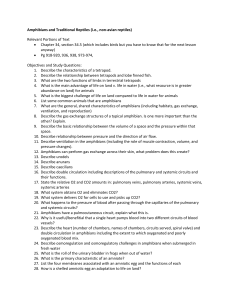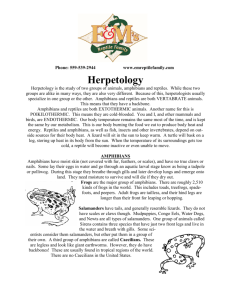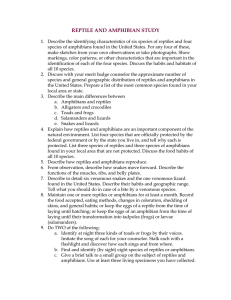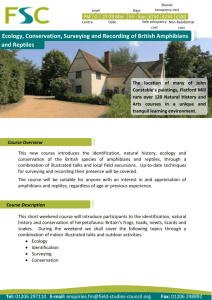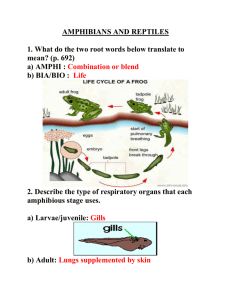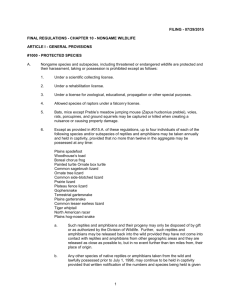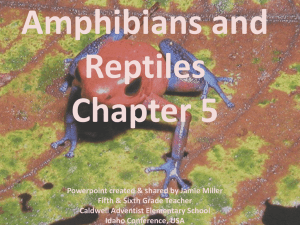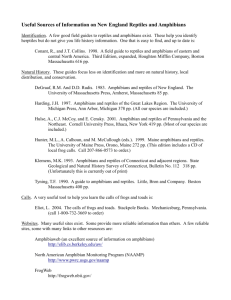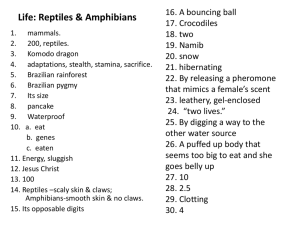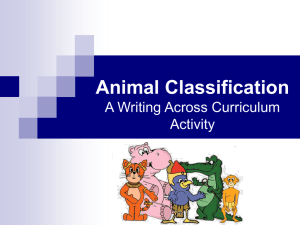Considerations for the Care and Use of Amphibians and Reptiles in
advertisement
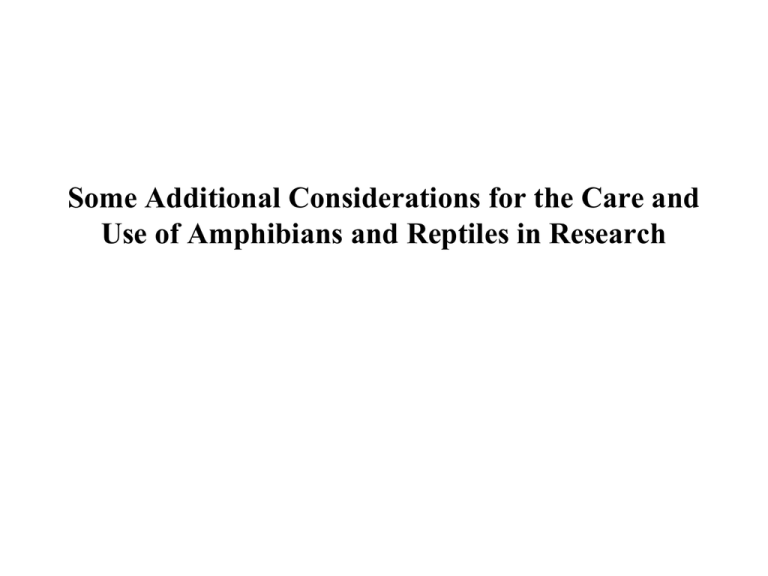
Some Additional Considerations for the Care and Use of Amphibians and Reptiles in Research Reptiles -- Special handling considerations - Salmonella - Aggressive/defensive behaviors - biting (all) - clawing (turtles, lizards) - fecal spraying (snakes) Housing Reptiles: Adults and juveniles: moisture, basking sites, density, feeding schedules Eggs: substrate moisture, temp., positioning to avoid membrane damage Euthanasia - Reptiles • Intravenous injection of barbituates - problem – barbituates are scheduled drugs (controlled substances) thus difficult to obtain - possible solution – intracoelomic injection of MS-222 (Conroy et al 2009). Inhalation of anesthetics prior to decapitation -- very effective – typical anesthetics employed are isoflurane and halothane Decapitation followed by immediate pithing Unacceptable methods – -- freezing – ice crystals may form prior to death Amphibians -- Special handling considerations: - Salmonella, but recent research suggests that handling frogs with latex gloves may lead to mortality - Toxic dermal secretions (toads, some salamanders) (note – latex gloves may be toxic to amphibians!!) Housing Amphibians: Adults: substrate moisture, hiding substrates, light spectrum, temperature Embryos: aeration, water pH 6 to 7.5 generally ideal, dissolved oxygen Larvae: aeration, pH (as with embryos), feeding (know your species), densities Euthanasia - amphibians • Generally similar to reptiles. • Also acceptable - dermal application of benzocaine followed by decapitation, pithing, or cervical dislocation. • Also acceptable – submersion in buffered MS-222 followed by decapitation, pithing, or cervical dislocation Field collecting • A major threat to amphibians today is infectious disease – fungal, bacterial, viral • It is very important that field collectors do not serve as vectors for these diseases • Between sampling sites, clean (bleach rinse) all boots, nets, other instruments. • Be aware of prevalence of amphibian diseases in your study areas. As with any other animal study, if you have ANY questions, please contact the committee and we will guide you to the proper resources. GUIDELINES FOR USE OF LIVE AMPHIBIANS AND REPTILES IN FIELD RESEARCH, Compiled by American Society of Ichthyologists and Herpetologists (ASIH), The Herpetologists' League (HL), Society for the Study of Amphibians and Reptiles (SSAR) http://199.245.200.110/pubs/herpcoll.html Numerous other publications dealing with care and use of amphibians and reptiles are linked from the IACUC website


